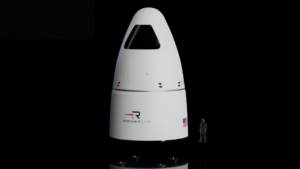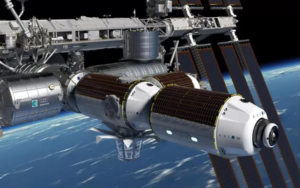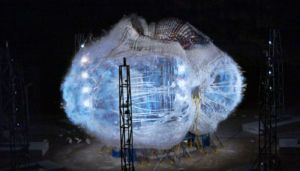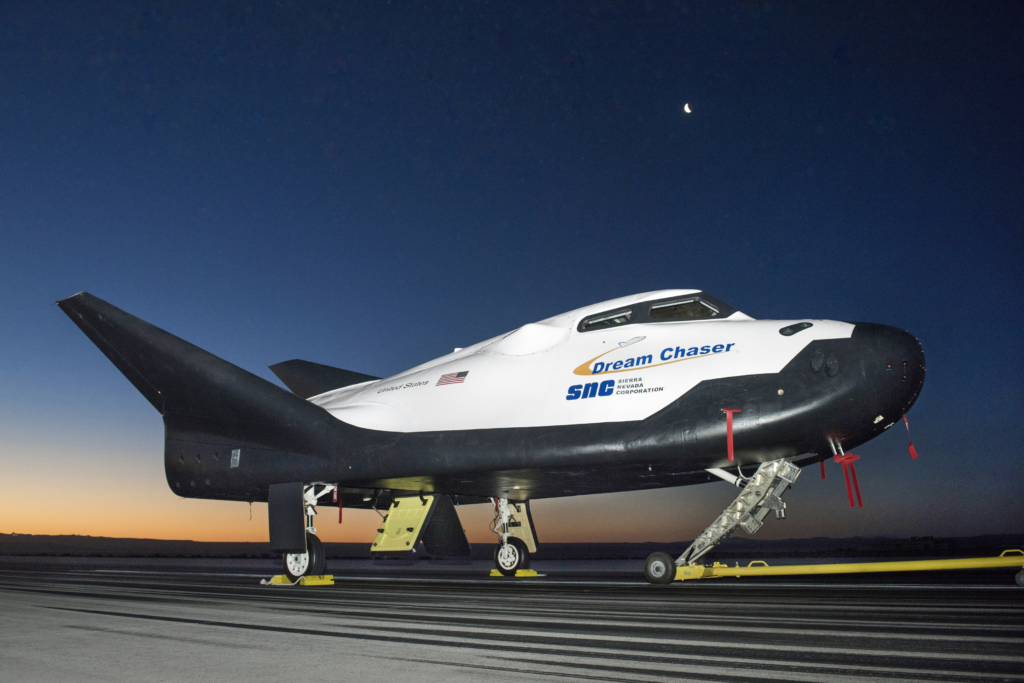
Dream Chaser Tenacity Is Almost Ready To Launch
At one point in time, thanks to the Space Shuttle, watching a rocket with wings lift off and eventually return to Earth and land on a runway was somewhat of a common occurrence. Unfortunately, since the Shuttle program was shut down, we really haven’t seen a similar spaceplane system in use. That being said, this could change in just a few months as Sierra Space’s first Dream Chaser test article prepares to launch.
Named Tenacity, this spaceplane is uncrewed and is meant to carry cargo to and from low Earth orbit destinations such as the ISS. New insight from both Sierra Space and the first mission’s launch provider ULA highlights that progress is coming along and they are just about ready to lift off. After quite a few delays, it looks as if this maiden flight is on track.
For many months now we have watched Tenacity transform from a barren skeleton to a fully operational spaceplane covered in thermal tiles. This first flight will put each and every component to the test and even deliver cargo to the International Space Station. Here I will go more in-depth into Tenacity’s recent progress, the final steps before rocket integration, the mission plan, and more.
Rocket Integration Prep
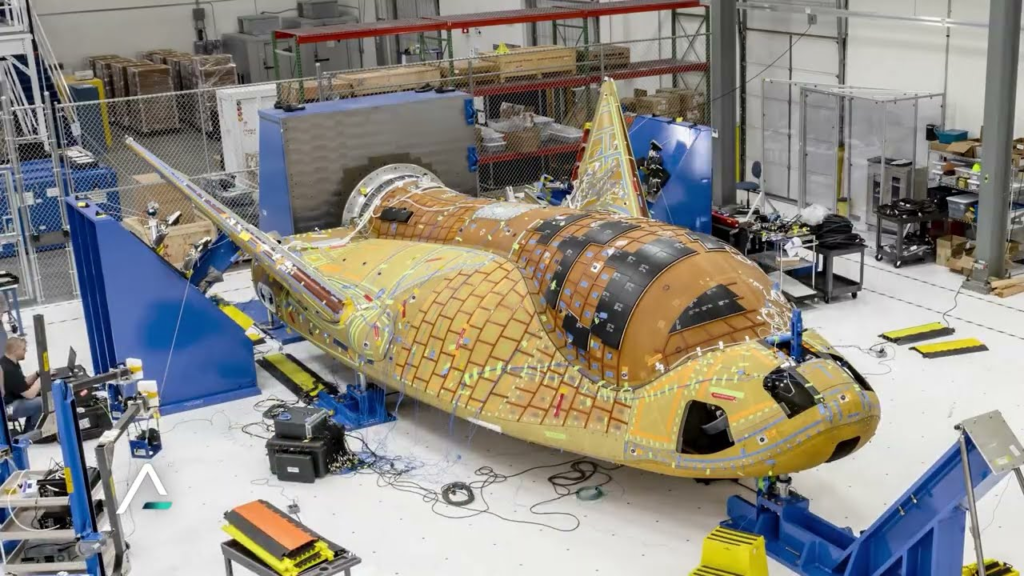
Not long ago, Sierra Space was targeting August as the launch date for Tenacity. However back in March, NASA updated its internal schedule to show that the Dream Chaser spacecraft would instead berth to the ISS no earlier than December 17, 2023. This delay was two-fold, because for one, Tenacity needed more time for testing and launch prep, and two, the rocket set to launch Tenacity, ULA’s Vulcan, was also being delayed.
Since then, we haven’t received an official update on the launch date, however, a few things have changed. As of right now the companies are targeting a launch in early 2024. Speaking at the Jeffries Space Summit online investor conference on June 27, Tom Vice, chief executive of Sierra Space, said the company was continuing to work towards a first launch of its cargo Dream Chaser vehicle as soon as December. That vehicle, he said, is going through final integration and testing work at the company’s Colorado factory. It remains scheduled to ship later this summer to NASA’s Neil Armstrong Test Facility in Ohio, the former Plum Brook Station, for thermal vacuum testing. From there it will go to the Kennedy Space Center for final launch preparations.
Most importantly, he commented that he expected Dream Chaser to be fully integrated with its launch vehicle, United Launch Alliance’s Vulcan Centaur, in “the December timeframe” and launch in a window that extends into early February. Vehicle integration in December or January would support a launch in the first months of 2024. At this point, it seems like the biggest concern has shifted from the Tenacity test article and now the Vulcan rocket.
Vulcan’s first mission is carrying payloads from a few different companies, not including Sierra Space. It’s the second Vulcan launch that Tenacity will be integrated on. Considering the fact that Vulcan’s first flight was supposed to be months ago and still hasn’t happened, it brings up concerns regarding the second launch happening on time. ULA recently found a weakness in Vulcan’s upper stage forward dome which required the company to destack the practically flight-ready rocket and ship it back to the factory for upgrades. Despite this, the company is still very confident the rocket will lift off this year. When asked about Vulcan delays, Tom Vice said, “We’re watching the Vulcan very carefully. They’ve got to get up their first flight of Vulcan, turn the mission data analysis around and then we’re on the second flight.” This quote makes it clear that Sierra Space is a bit concerned about Vulcan’s timeline.
On the bright side, Tory Bruno, ULA CEO, recently talked about the second Vulcan being ready to launch by early 2024. At the end of the day, this second flight with Dream Chaser most depends on the maiden flight and its results. Hopefully, all goes well and the second Vulcan will get through pre-launch testing without a hitch and liftoff around February next year.
The second launch with Tenacity on top is the first of at least seven Sierra Space will perform for NASA to transport cargo to and from the International Space Station. Dream Chaser can deliver up to 5,500 kg of pressurized and unpressurized cargo to the space station, including food, water, supplies, and science experiments and returns to Earth. Dream Chaser can return critical cargo at less than 1.5 g’s using a gentle runway landing. These unique features are why NASA chose this vehicle for these initial missions and possibly many more in the future.
Tenacity Test Article

In terms of physical progress Tenacity has been very busy over the past couple of months. Earlier this summer for example the spaceplane was successfully powered up for the first time. The power-up of Dream Chaser signified the activation of its integrated systems, showcasing the culmination of years of rigorous engineering, design, and testing. Sierra Space simulated the power that will be generated from Dream Chaser’s solar arrays once on orbit. Test engineers plugged that power into Dream Chaser and began turning on systems. Sierra Space exercised flight computers, base processors and low-voltage distribution units.
In addition, by now, all of Dream Chaser’s heat shield tiles should be installed allowing the vehicle to begin vacuum testing. In total, there are a few thousand tiles each with unique shapes and specific placements across the body. They also vary between white and black color depending on the location. Here, both versions of the tiles are used to help balance the heat absorbed on-orbit and the heat that the spaceplane will need to survive on reentry. The areas in black will have the hottest temps on reentry while the white tiles are more reflective and will be cooler. Sierra Space expressed in the past that this process takes time and needs to be perfect.
Designed for high reusability, this vehicle is trying to reduce overall cost, providing quick turnarounds between missions. The ability to liftoff on top of multiple launch vehicles and land at a wide variety of runways makes Dream Chaser a flexible option for reliable transportation. Dream Chaser was originally designed as a crewed spaceplane, in part under NASA’s Commercial Crew Program, capable of carrying up to seven astronauts to and from the space station and other low Earth orbit (LEO) destinations. Dream Chaser is 30 feet, or 9 meters long—roughly ¼ the total length of the space shuttle orbiters.
It’s important to point out that Dream Chaser features multiple variants and that Tenacity is only a cargo spaceplane. Instead of one design that works for crew and cargo missions, plus extended missions, they separated Dream Chase into a few different designs. A few months ago Tom Vice said that the crew version will have 40% greater cargo capacity than the first version and can support a six-person crew.
The ability of Dream Chaser to glide back to Earth in a runway landing, rather than splash down in the ocean, is a key selling point to customers, he argued. “We just think that landing at runways around the world is a huge differentiator: low-g landing back on a runway for both time-critical cargo and science, but also just the way people are going to want to fly back and land.” He also said “We’re thinking about investigating the right technologies in thermal and propulsion and materials that allows us to potentially think about the staging options that would allow us, for the first time, have horizontal takeoff,”. This is quite an ambitious future goal but highlights some of the company’s plans.
Joining Tenacity on the first launch is a large attachment on the back of the spaceplane named Shooting Star. Shooting Star adds a service for NASA to send additional critical science, food, and cargo to the space station. Crews can access the Shooting Star via the aft hatch, berthing to the space station. Traveling through the Shooting Star takes them to the forward portion where they can open the hatch and gain access to the Dream Chaser. When attached to the space station, Shooting Star provides a normal cabin environment for astronauts to work, and a prime location for cargo to be removed and placed onto the station after berthing.
Shooting Star also offers cargo disposal services for NASA. Once separated from Dream Chaser, the cargo module burns up safely in the Earth’s atmosphere and Dream Chaser glides gently back onto Kennedy Space Center’s runway. Since Shooting Star is disposed of on every CRS-2 mission, Sierra Space Corporation will maintain a production line to support all subsequent Dream Chaser missions. Already we have seen images of the second Shooting Star module coming along.
Lastly, since the first mission will berth to the ISS, crews have already been prepared for how to access and safely operate the spaceplane. On March 7, Sierra Space hosted its first-ever Dream Chaser astronaut training for two members from the upcoming SpaceX Crew-7 mission to the International Space Station (ISS). Crew-7 might be the team onboard the ISS when Dream Chaser berths with the station for the first time. The Senior Systems Engineer gave a full overview of Dream Chaser, covering topics such as systems identification and function, mission profiles, crew interfaces and operations. By the end, the astronauts walked away with a full understanding of the hardware they will encounter on Dream Chaser once it berths with the ISS.
Conclusion
Dream Chaser Tenacity could launch in just a few months at the very beginning of 2024. By now, it mostly depends on Vulcan and how fast ULA can get the first rocket in the air. Tenacity on the other hand is about to ship for testing before integration on Vulcan. We will have to wait and see how it progresses and the impact it has on the space industry.

